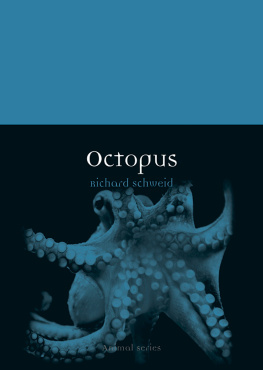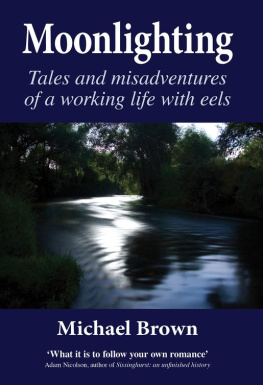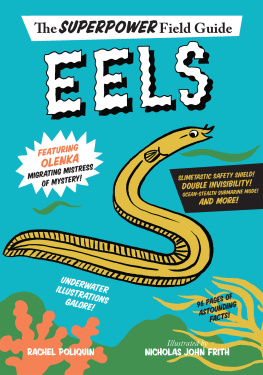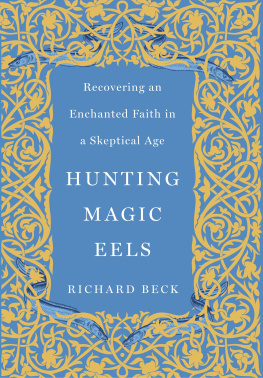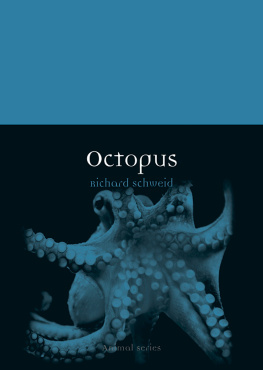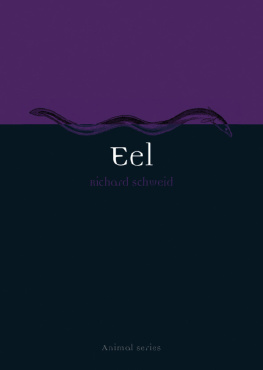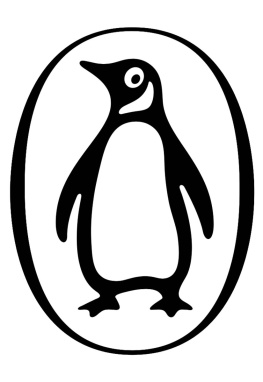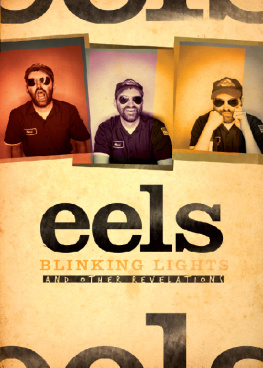Consider the Eel
2002 Richard Schweid
All rights reserved
Manufactured in the United States of America
This book was published with the assistance of
the Blythe Family Fund of the University of
North Carolina Press.
Designed by Richard Hendel
Set in Monotype Garamond
by Tseng Information Systems, Inc.
The paper in this book meets the guidelines for
permanence and durability of the Committee on
Production Guidelines for Book Longevity of the
Council on Library Resources.
Library of Congress Cataloging-in-Publication Data
Schweid, Richard, 1946
Consider the eel / by Richard Schweid.
p. cm.
Includes bibliographical references (p. ) and index.
ISBN 0-8078-2693-6 (cloth: alk. paper)
1. Anguillidae. 2. Eel fisheries. I. Title.
QL638.A55 S38 2002
597.432dc21 2001048067
06 05 04 03 02 5 4 3 2 1
Eel Pye with Oysters recipe reprinted from A Tryon Palace Trifle from the Collection of the Tryon Palace Historic Sites and Gardens. Excerpt from A Lough Neagh Sequence by Seamus Heaney reprinted from A Door Into the Dark (London: Faber and Faber Ltd., 1969) by permission of the publisher, and from Opened Ground: Selected Poems 19661996 by Seamus Heaney, 1998 by Seamus Heaney, by permission of Farrar, Straus and Giroux, LLC.
Drawings 2002 by
Ed Lindlof
For my brother David,
both friend and family
Contents
How mobile, fleet, and uncontrolld,
Glides lifes uncertain day!
Who clings to it, but grasps an eel,
That quicker slips away.
Konrad Gesner (151665)
Preface
It was a June morning in 1998 when I first learned some of the basic facts of an eels mysterious natural history.
Every European and American freshwater eel is conceived and born in the weedy Sargasso Sea, a vast, rarely traveled, 2 million square miles of deep Atlantic Ocean between Bermuda and the Azores. The prevailing currents carry the larval eels to their prospective homes in the freshwater rivers of either the United States and Canada or Europe. The tiny larvaeshaped like little leavesdrift with the currents for about a year if they get carried to North American rivers, or up to three years if they are carried to Europe.
When the eel larvae enter fresh water, they begin to actively hunt food for the first time and transform into what we know as eels. They may live their bottom-dwellers lives in fresh water for as long as 20 years. Then, one day, they head back downriver toward the ocean and begin to transform again, as their bodies prepare for what may be a journey of as much as a thousand miles across the Atlantic. Their digestive systems atrophy, because during the trip through the ocean depths they will rely on stored energy and will not eat. Their eyes start to widen, changing for optimal vision in dim blue ocean light, and their muddy-green bellies turn snow-white. They will encounter multiple predators during the long saline passage ahead, back to the Sargasso Sea, where they will mate, reproduce, and die.
I learned all these things in El Palmar, a small town just south of Valencia, Spain, and the eeler who explained the animals life cycle to me did so as he served up an eel he had just taken from a trap, killed, cleaned, and cooked in olive oil in an earthenware dish. I ate it with a chunk of fresh, crusty bread. It was delicious. I was immediately fascinated.
That was, of course, just the beginning. The more I learned about the eel, the more I came to appreciate its biological and gastronomic qualities, both of which have fascinated people for millennia. It is a rich and fatty fish, high in lipids and proteins, with its own delicious taste. People seem to have always eaten it. Eels fed the Greeks in Aristotles day, 2,300 years ago, and helped the Mayflower Pilgrims to endure their first year in North America in 1621. They are one of the human races survival foods, and continue to be consumed in great quantities around the globe, prepared in a wide variety of ways. Although they have fallen out of favor in the United States, well over $2 billion a year is spent on eels in the rest of the world.
We are not talking here about the infamous electric eels of the Amazon and Orinoco Rivers, or the vicious moray eels that spend their lives in salt water. Neither of those eels is in the same family as the eels that North Americans and Europeans catch in their lakes and rivers. The life of an eel in the fresh waters of the Northern Hemisphere is a story of the mysterious wrapped in the commonplace. What could be more prosaic than an eel burrowed in the mud at the bottom of a creek, river, or lake? It seems a most ordinary lifeeating, swimming, and resting. Yet, each of the millions of eels has come hundreds, or even thousands, of miles across the Atlantic Ocean to live in that little bit of muddy, freshwater bottom, and will make the trip in reverse before dying. Eels have never been bred successfully in captivity, nor are they known to have reproduced anywhere outside the Sargasso Sea.
As I searched for information about them, I began to have the occasional opportunity to watch eels, and the more I did so, the more I came to admire their grace of movement, their pure sinuosity. I found that I could observe them gliding through the water for a long time without becoming bored, and I came to agree with William Roots, a physician and naturalist from Kingston, England, who wrote in 1832: The undulating motion of the eel in swimming is beautifully seen in watching these young creaturesindeed the whole process of their natural history is well worth much and patient observation.
I learned that there is an eel world with interlocking capitals around the globe, set like a palimpsest on our idea of the global consumer economy. Instead of being linked by cities like New York, Paris, and Tokyo, the global eel market is knit together in villages and towns like Arapahoe, North Carolina; Aguinaga, Spain; and Toomebridge, Northern Ireland. These are places where the eel is not an invisible resident or a casual meal, but a part of the base economy, directly connected to the lives of many of the people there.
Wild game in the world was long ago reduced to levels far below what is needed to feed large groups of people, but fishthe seas so vast, the piscine populations so largebegan to disappear in significant numbers only in the last half of the twentieth century, when floating vacuum cleaners under a number of flags sucked available stocks to market for the few short years it took to seriously deplete or destroy them. The resource is disappearing, and will, apparently, be replaced in our diets by fish raised in captivity, perhaps genetically identical to their cousins in the wild, or perhaps genetically modified, but which, in either case, simply will not taste the same as animals that grew up foraging in seas, rivers, or lakes. An evergrowing number of fish bought and sold in the world is aquacultured, farm grown, and, if things continue apace, the great bulk of global fish consumption will come from aquaculture within a few decades. Fish caught in the wild will be expensive and scarce, perhaps providing a free-range, or organic, upscale market. It will soon be as hard to be a self-employed, independent fisherman or fisherwoman in the developed world, as it has already become to be a small-scale working farmer.
People who still fish for a living often see this state of affairs as a result of too much government interference in how they practice their craft. Strict seasons, catch limits, and licensing requirements are the bane of the workaday world on the water. But overfishing and environmental degradation, both profit driven, are far more likely culprits than governmental efforts to conserve stocks. Whatever the reasons, the world will be a poorer place when people are no longer able to earn their daily bread by fishing.
Next page


